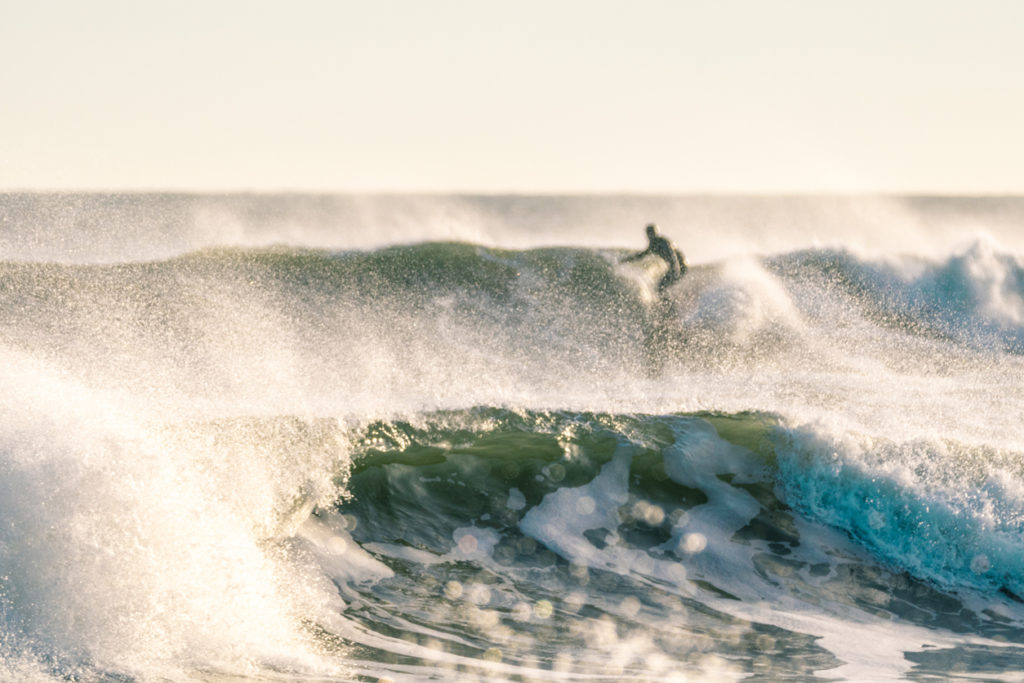
The coastline of Kent is unique, and because of this, we have 20+ surf spots, and these vary in quality and conditions to be surfed. It would be irresponsible for us to describe all the spots and detail the conditions with which this break; however, that is the fun of surfing, to search and find.
“Surfing is learning. Surfing is looking. Surfing is finding.”
I can barely remember the last time I found a new surf spot, but a big part of surfing for me is finding an empty wave somewhere that just I and a friend can go and surf. For me, the saying goes, I would rather surf a poor wave with no one on it than a great wave with everyone on it. The trouble with Kent is that the quality is generally poor, but the main surf spots attract lots of surfers who spoil the experience and drop in. So finding your own spot can be very rewarding.
A few spots you might want to look at and learn more about are our St Margaret’s Bay, Folkestone, Littlestone-on-Sea, Greatstone on Sea and just over the Kent border in Sussex is Camber Sands or Fairlight; even Hastings has a great longboarding community. Between all these spots and maybe just beyond, you will find others that we will not name. Search… Learn… Enjoy… Respect local surfers always.
So what should you do…
1. Google Earth
Yes, I know. Everyone knows about this. But in all seriousness, if you know even the slightest bit about topography/bathymetry and how a wave breaks, you’ll probably be able to find something. And one of the most helpful things about this satellite-assisted search is that you’ll be able to tell (at least a little bit) what direction your new spot will work on.
2. Look both ways
The last time I “found” a new wave, I was surfing one that was well-known. I had to crane my head around a bunch of heads to see it. It was right there, just two hundred yards away, breaking off a rock and funnelling down the line. Of course, it was breaking into ankle-deep water and, as it turns out, only worked on that exact swell direction, period, swell height, tide, wind speed, lunar cycle, and Saturn’s relation to Pluto, but you never know. It was right there, and no one was on it except me.
3. Settle for it
Sometimes you’ll drive by something a thousand times on your way to something you know is better. But sometimes, just go look. You know that wave you think might work when it’s just a little more west? Next time it’s a little more west, go sit there for a few hours and see what happens. Sure, you’ll miss a sure thing at the popular spot, but that will happen again. And if you score, you don’t have to tell anyone about it.
4. Listen to rumors
There’s always a rumour of a wave somewhere. Most of the time, they’re highly exaggerated and wildly speculative because surfers are worse than fishermen when it comes to exaggeration and speculation, but there’s the off-chance there’s something to what they’re saying. I call these “Grape-vine Waves.” Go find one.
5. Just go and Look
No one walks anymore. For those of you who have surfed in California you may know Trestles, I surfed there for the first time in the late 1980s. When we decided where to go, one of my friends was leery about going there because it was a “crazy long walk.” I thought a “crazy long walk” meant an hour or more through rough terrain. Turns out it meant “a sunny stroll on a paved, beautiful trail.” Suck it up. Go get your feet dirty. Wade through rivers, swim through bays, climb up and down cliffs (and yes I have done this in Fairlight, East Sussex to find a great spot).
